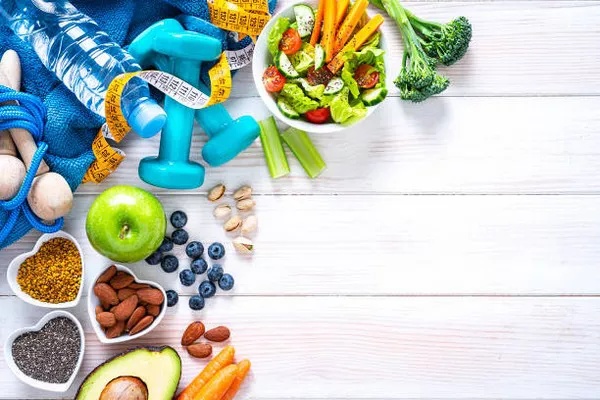A calorie surplus diet is a nutritional approach where you consume more calories than your body burns. This diet is typically used to gain weight, build muscle, or improve athletic performance. In this article, we will explore what a calorie surplus diet is, how it works, and how to balance it with fitness and weight loss goals.
What is a Calorie Surplus Diet?
A calorie surplus occurs when the number of calories consumed exceeds the number of calories burned by the body. This surplus of energy is stored in the body, often leading to weight gain. A calorie surplus diet is usually followed by individuals aiming to build muscle mass or increase body weight for various reasons, such as sports or bodybuilding.
How Does a Calorie Surplus Work?
The basic principle behind a calorie surplus is simple: consume more calories than your body needs for daily functions and activities. The extra calories provide the energy required for muscle growth and repair, which is essential for those looking to increase muscle mass.
Calculating Your Calorie Surplus
To determine the number of calories you need for a surplus, follow these steps:
Calculate Your Basal Metabolic Rate (BMR): This is the number of calories your body needs at rest.
Determine Your Total Daily Energy Expenditure (TDEE): This includes your BMR plus calories burned through physical activity.
Add Extra Calories: Typically, a surplus of 250-500 calories per day is recommended for muscle gain.
Benefits of a Calorie Surplus Diet
Muscle Growth
A calorie surplus provides the necessary energy for muscle growth. Consuming enough protein and engaging in resistance training are crucial for maximizing muscle gain.
Improved Athletic Performance
For athletes, a calorie surplus can enhance performance by providing additional energy for intense training and recovery.
Weight Gain
For individuals with a fast metabolism or those recovering from illness, a calorie surplus diet can help in gaining weight healthily.
Potential Drawbacks of a Calorie Surplus Diet
Fat Gain
While the primary goal may be muscle gain, consuming too many calories can lead to fat accumulation. It’s essential to monitor your intake and adjust as needed.
Nutritional Imbalance
Focusing solely on calorie intake may lead to neglecting essential nutrients. A balanced diet with a variety of foods is crucial.
Balancing a Calorie Surplus Diet with Fitness Goals
Setting Clear Objectives
Determine your primary goal, whether it’s muscle gain, weight gain, or improved performance. This will help tailor your diet and exercise routine accordingly.
Incorporating Strength Training
Strength training is vital for muscle growth. Focus on compound exercises like squats, deadlifts, and bench presses, which target multiple muscle groups.
Monitoring Progress
Keep track of your weight, body measurements, and strength gains. Adjust your calorie intake and exercise routine based on your progress.
Fitness Suggestions for a Calorie Surplus Diet
Resistance Training Program
A well-structured resistance training program is essential. Aim for at least three to four sessions per week, focusing on different muscle groups.
Cardio Exercise
While the primary focus may be on muscle gain, including some cardiovascular exercise can help maintain cardiovascular health and prevent excessive fat gain.
Rest and Recovery
Adequate rest and recovery are crucial for muscle growth. Ensure you get enough sleep and allow your muscles time to recover between workouts.
See Also: Keto Vs. Calorie Deficit: Which Is Better?
Weight Loss Considerations
While a calorie surplus diet is primarily for weight gain, you may want to transition to weight loss at some point. Here are some tips for making that transition:
Gradual Caloric Deficit
To lose weight, gradually reduce your calorie intake to create a caloric deficit. This means consuming fewer calories than your body burns.
Focus on Protein
Maintain a high protein intake to preserve muscle mass during weight loss. Protein also helps keep you full, reducing the likelihood of overeating.
Increase Cardio
Incorporate more cardiovascular exercises to burn additional calories and accelerate fat loss.
Sample Meal Plan for a Calorie Surplus Diet
Breakfast
3 scrambled eggs with spinach and cheese
2 slices of whole-grain toast
1 cup of mixed berries
1 glass of milk
Snack
Greek yogurt with honey and almonds
Lunch
Grilled chicken breast
Quinoa salad with mixed vegetables
1 avocado
Snack
Protein shake with banana and peanut butter
Dinner
Baked salmon
Sweet potato
Steamed broccoli
Evening Snack
Cottage cheese with fruit
Common Mistakes to Avoid
Overeating Junk Food
While it’s tempting to eat high-calorie junk food, focus on nutrient-dense foods for better health and muscle gain.
Ignoring Recovery
Overtraining without proper recovery can lead to injuries and hinder progress.
Lack of Consistency
Consistency is key in a calorie surplus diet. Stick to your plan and monitor progress regularly.
Conclusion
A calorie surplus diet can be an effective way to gain weight, build muscle, and improve athletic performance. However, it’s essential to approach it with a balanced and well-structured plan. Incorporate strength training, monitor your progress, and adjust your diet as needed. Remember, the key to success is consistency, proper nutrition, and a well-rounded fitness routine.


